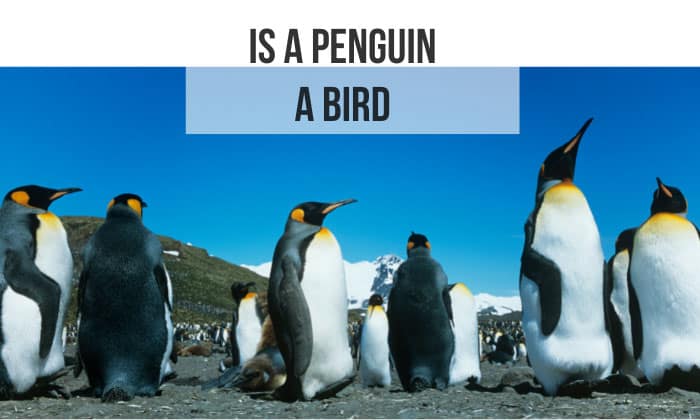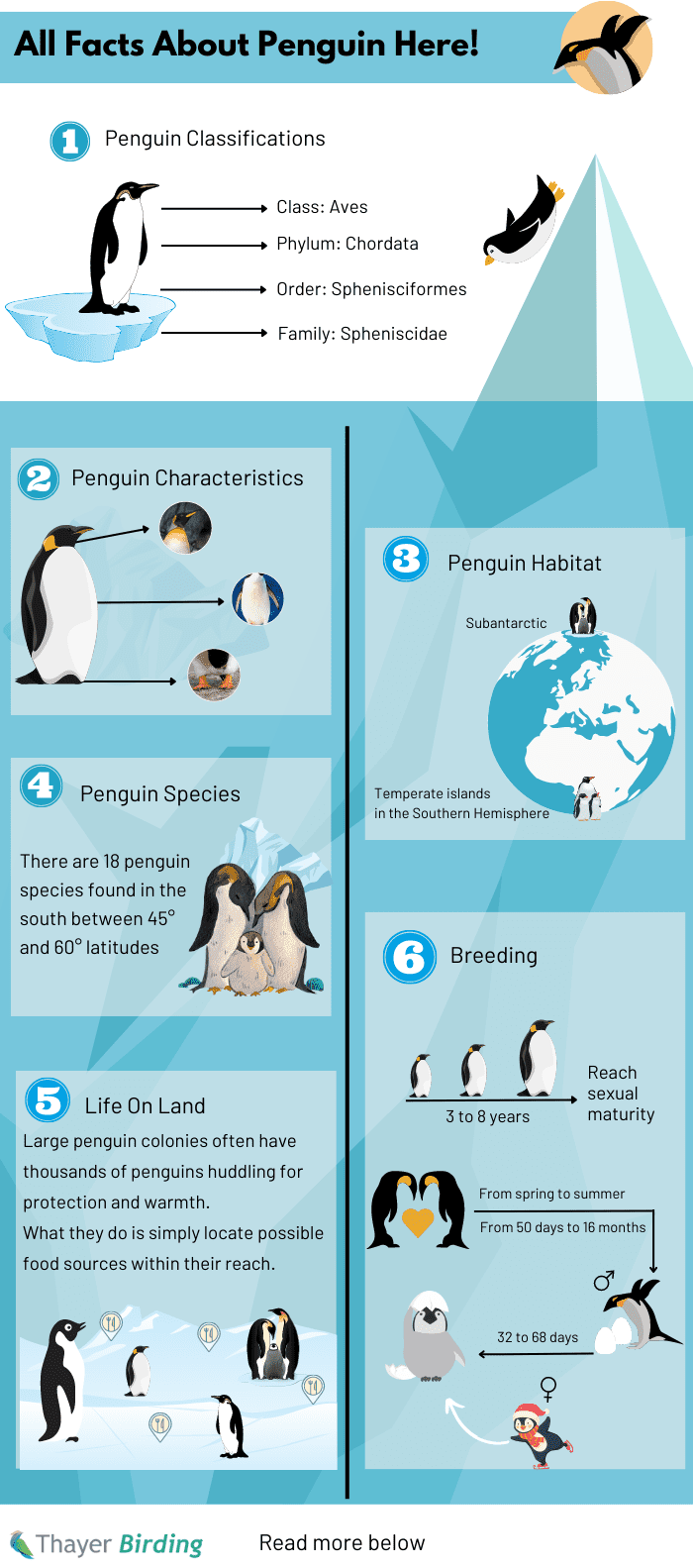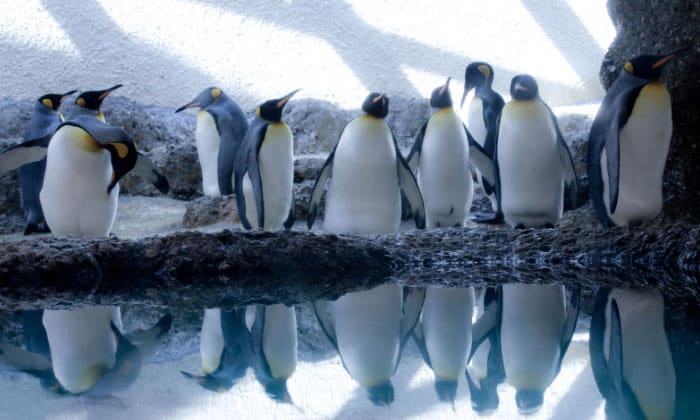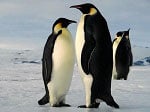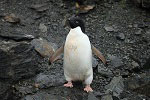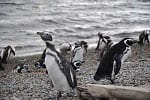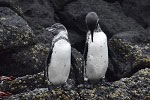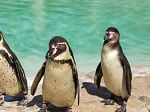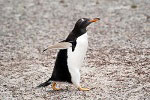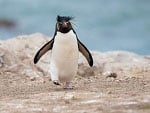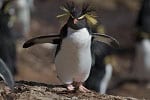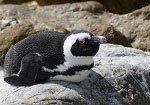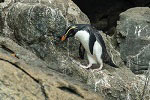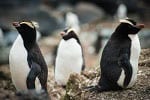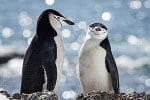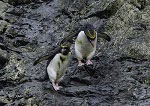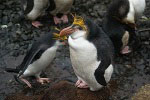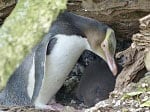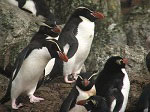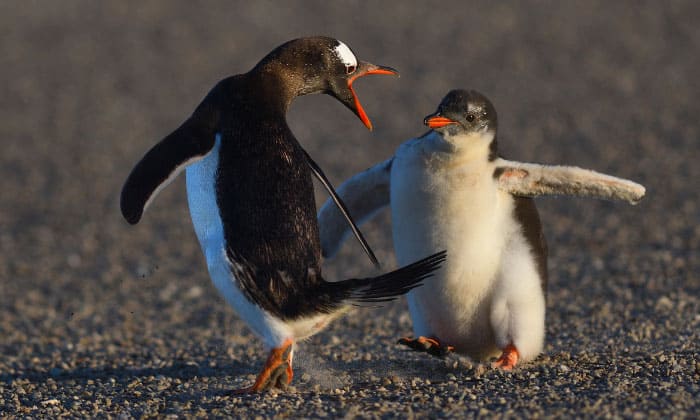Is a penguin a bird? Yes! These aquatic flightless birds belong to the class Aves or birds. But they cannot fly. What makes them qualified as birds?
Flight is not a prerequisite for an animal to be considered a bird. For instance, there are kiwis and ostriches which are also classified as Aves, even though they cannot fly.
Learning more about penguins, their features, behavior, habitat, and different species will bring light to this common question. We have penguin infomation for you to read and ponder upon.
Table of Contents
About Penguin
A group of penguins is called a colony. These avians are on a carnivore diet and feed on fish, krill, squid, and octopus. Penguins can live from 15 to 20 years on average. Their height can range from 16 to 45 inches, and they can weigh between 2 to 88 pounds.
1. Penguin Classifications
Regarding zoological taxonomy, penguins have the following classifications:
- Class: Aves (avians)
- Phylum: Chordata (penguins are vertebrates)
- Order: Sphenisciformes
- Family: Spheniscidae (the only family classification under Sphenisciformes)
2. Penguin Characteristics
What does a penguin look like? These flightless birds are known for their flippers and upright stance when on land. Their webbed feet make them clumsy on land, but their fusiform and sleek body helps them move gracefully without effort in the water.
The majority of penguins, mostly adults, have dark and white countershading with some yellow patches. The pattern and coloring allow them to camouflage with the ocean when viewed from above. The distinct markings and coloration differ depending on the penguin species.
3. Penguin Habitat
A large percentage of penguins live in subantarctic and temperate islands in the Southern Hemisphere.
That said, you can find more of a certain penguin species in a region. For example, African penguins can withstand heat well, which is why they live in southern Africa. Emperor penguins, meanwhile, reside in the Antarctic, thanks to their four layers of feathers and huddling habits that help keep them warm.
4. Penguin Species
There are 18 penguin species found in the south between 45° and 60° latitudes. Let’s learn about these penguins scientific names and more in the table below.
| Species | Scientific Name | Definition | Conservation & Threats |
| Emperor Penguin
|
Aptenodytes forsteri | Tallest and heaviest living penguin. Only penguin specie to breed during the Antarctica winter. | Near Threatened (NT)
Threats – Human activities and climate change |
| King Penguin
|
Aptenodytes patagonicus | The second largest penguin. They are a slow walker and non-hopping penguin species. | Least Concern (LC)
Threats – Invasive species like foxes and changing sea surface temperatures.
|
| Adélie Penguin
|
Pygoscelis adeliae | The smallest penguin in the Antarctic. | Least Concern (LC)
Threats – Human disturbances (oiling, fishing, and research facilities near colonies). |
| Little Penguin
|
Eudyptula minor | Also known as the blue penguin, the smallest penguin in the world. | Least Concern (LC)
Threats – Residential and commercial development (such as gas drilling and gillnet fishing). |
| Magellanic Penguin
|
Spheniscus magellanicus | This species is easily recognized by its two black bands across its white bellies. | Least Concern (LC)
Threats – Residential and commercial development (e.g. fisheries interactions and oil pollution). |
| Galápagos Penguin
|
Spheniscus mendiculus | They are the only penguins living north of the equator in the Galápagos Islands, Ecuador. | Endangered (EN)
Threats – Non-native predators like cats and El Niño/Southern Oscillation events |
| Humboldt Penguin
|
Spheniscus humboldti | Also referred to as the Peruvian penguin. They have a white C-shaped band on the side of their face. | Vulnerable (VU)
Threats – Energy production and mining. |
| Gentoo Penguin
|
Pygoscelis papua | The fastest penguin that can swim at 22 mph underwater. | Least Concern (LC)
Threats – Oil exploration, tourism, and fishing |
| Southern Rockhopper Penguin
|
Eudyptes chrysocome | Small penguins that live on rocky shores. There’s debate regarding whether they belong to the same category as northern and eastern rockhopper penguins. | Vulnerable (VU)
Threats – Temperature extremes and changing wind patterns |
| Northern Rockhopper Penguin
|
Eudyptes moseleyi | Also known as Moseley’s penguin and is the smallest of all crested penguins. | Endangered (EN)
Threats – Introduced species, marine activities, and pollution |
| African Penguin
|
Spheniscus demersus | Also called the Cape Penguin or Jackass Penguin. It is the only penguin species to nest in Africa. | Endangered (EN)
Threats – Energy production, mining, and food shortage. |
| Fiordland Penguin
|
Eudyptes pachyrynchus | Their winters are spent in the ocean, where they live a solitary lifestyle. | Near Threatened (NT)
Threats – Transportation and service corridors, introduced predators like stoats. |
| Erect-crested Penguin
|
Eudyptes sclateri | The largest of the crested penguins. | Endangered (EN)
Threats – Fishing and climate change. |
| Chinstrap Penguin
|
Pygoscelis antarctica | Their name comes from the recognizable band on their face. | Moderately Depleted
Threats – Changes in krill biomass and (possibly) volcanic activities. |
| Macaroni Penguin
|
Eudyptes chrysolophus | Known for their large reddish-orange bill and a name taken from macaroni fashion. | Vulnerable (VU)
Threats – Commercial fishing and competition with fur seals. |
| Royal Penguin
|
Eudyptes schlegeli | Have shorter and overlapping feathers than all other penguin species. | Least Concern (LC)
Threats – None currently, but storm surges and other climate events could be a concern. |
| Yellow-eyed Penguin
|
Megadyptes antipodes | Also called tarakaka or hoiho. It’s the only remaining species in its genus. | Endangered (EN)
Threats – Changing sea temperatures and by-catch mortality. |
| Snares Penguin
|
Eudyptes robustus | They are diurnal birds that live on Snares Islands. | Vulnerable (VU)
Threats – Fishing and oil spills. |
5. Life On Land
Penguins, regardless of their species, are known for their upright stance and adorable waddling. They are also seen pushing forward with their feet while slipping across the ice on their bellies. Large penguin colonies often have thousands of penguins huddling for protection and warmth.
Penguins’ inability to fly makes it more challenging to find food. They cannot assess the environment from above, which limits the area they can forage. What they do is simply locate possible food sources within their reach and hope for the best.
6. Breeding
It takes around 3 to 8 years for penguins to reach sexual maturity. The majority of penguins breed yearly, usually from spring to summer. Each species’ breeding cycle differs, but can last from 50 days to 16 months. Little Penguins are known to have the shortest reproduction period while King Penguins breed late and longest.
Female penguins lay two eggs at a time, except for King Penguins and Emperor Penguins, which can only lay one egg. The incubation period is between 32 to 68 days, depending on the species and the egg’s size. Erect-crested Penguins have the shortest incubation period, while Emperor Penguins have the longest.
Emperor Penguins do not take turns incubating their eggs and foraging for food. The male keeps the egg warm between their feet, fasting and living off its reserved body fat. The female feeds itself for several weeks and comes back just in time for the egg to hatch.
What Makes a Penguin a Bird?
Let’s look at a penguin’s characteristics that make it a bird. Penguins share these things with other avians, proving they are within the Aves classification:
- Backbones
- Feathers
- Lungs
- Four-chambered heart
- Warm-blooded
- Two Legs
- Egg-laying
- Sharp vision
Frequently Asked Questions
Do penguins have feathers?
Yes. They have approximately 100 feathers per square inch, which are more than what most birds have. These feathers help keep the birds warm.
What do penguins do?
Unlike what many people think, penguins are not idle birds. Their days are spent doing more than just swimming and waddling in search of food. Penguins spend their day:
- Finding a nesting location
- Keeping an eye out for predators
- Preen their feathers
- Doing water stunts for fun
Is a penguin a fish?
No. Penguins have wings designed to allow them to swim. This is the main reason many confuse them with fish. But if we look closely, the way they swim is more similar to a flying bird than a swimming fish.
Conclusion
Now that you know the answer to the question, “Is a penguin a bird?” it is time to share this information with your family and friends, especially those who love penguins. Knowing what type of animal is a penguin and learning all sorts of facts about them brings us closer to understanding these animals.
We hope you had a great time reading this article as much as we love putting them together for you. Can you name all the National Geographic penguins and identify each one? Share what you think in the comment section!

George and I became friends after a birdwatching trip with our new group. And we have been enjoying every adventure together. When he told me the idea of establishing a site that shares our experiences and fun, I immediately agreed. After trials and errors, here we have Thayerbirding.


